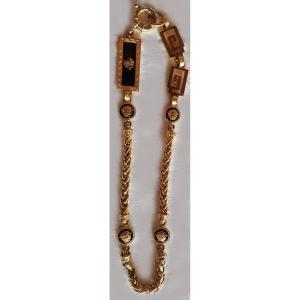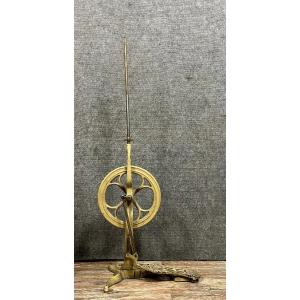It has two arms, each with a slot in which a movable pivot slides, held by a screw.
The reduction compass was invented by the Swiss scientific instrument maker Jost Burgi (1552-1632) in the early 17th century. This instrument derives from the Roman "whole and half" compass, an ancient example of which was found among the ruins of the Roman city of Pompeii.










































 Le Magazine de PROANTIC
Le Magazine de PROANTIC TRÉSORS Magazine
TRÉSORS Magazine Rivista Artiquariato
Rivista Artiquariato